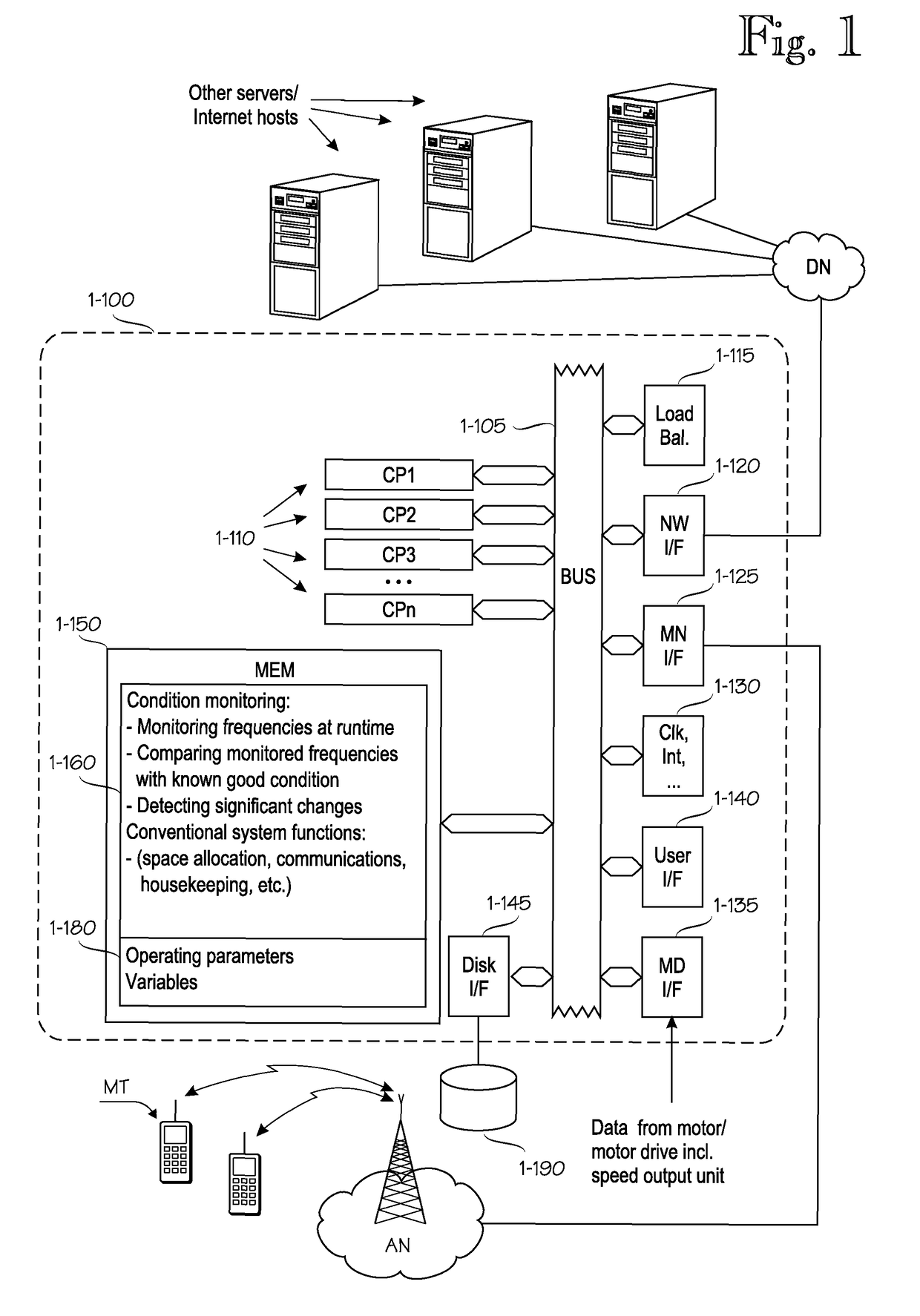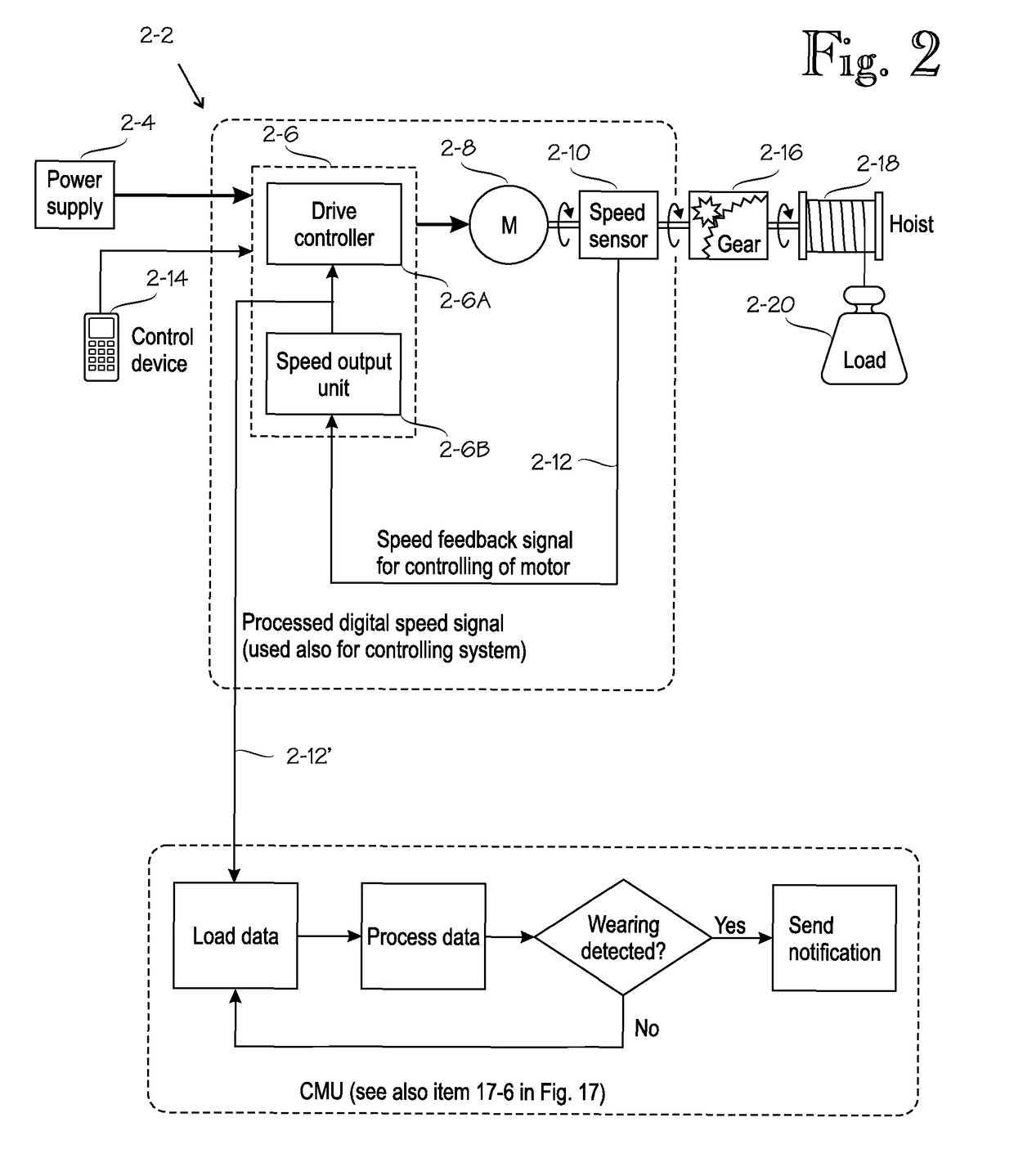Techniques for monitoring gear condition
a technology of gear condition and monitoring technique, which is applied in the direction of machine part testing, structural/machine measurement, electric/magnetic means, etc., can solve the problems of labor-intensive and expensive, difficult to retrofit existing equipment, and possible free fall of load, so as to reduce the need for instruments and facilitate the retrofitting of existing equipment
- Summary
- Abstract
- Description
- Claims
- Application Information
AI Technical Summary
Benefits of technology
Problems solved by technology
Method used
Image
Examples
Embodiment Construction
[0035]FIG. 1 shows an exemplary data processing architecture that can be programmed to perform the various data processing tasks relating to embodiments of the invention. In the following the data processing architecture will be referred to as a computer, but those skilled in the art will realize that the data processing architecture need not be implemented as a dedicated computer. Instead, several embedded techniques are possible, as are techniques in which the inventive functionality is installed on a data processing system that exists for other purposes.
[0036]The architecture of the computer, generally denoted by reference numeral 1-100, comprises one or more central processing units CP1 . . . CPn, generally denoted by reference numeral 1-110. Embodiments comprising multiple processing units 1-110 are preferably provided with a load balancing unit 1-115 that balances processing load among the multiple processing units 1-110. The multiple processing units 1-110 may be implemented ...
PUM
 Login to View More
Login to View More Abstract
Description
Claims
Application Information
 Login to View More
Login to View More - R&D
- Intellectual Property
- Life Sciences
- Materials
- Tech Scout
- Unparalleled Data Quality
- Higher Quality Content
- 60% Fewer Hallucinations
Browse by: Latest US Patents, China's latest patents, Technical Efficacy Thesaurus, Application Domain, Technology Topic, Popular Technical Reports.
© 2025 PatSnap. All rights reserved.Legal|Privacy policy|Modern Slavery Act Transparency Statement|Sitemap|About US| Contact US: help@patsnap.com



